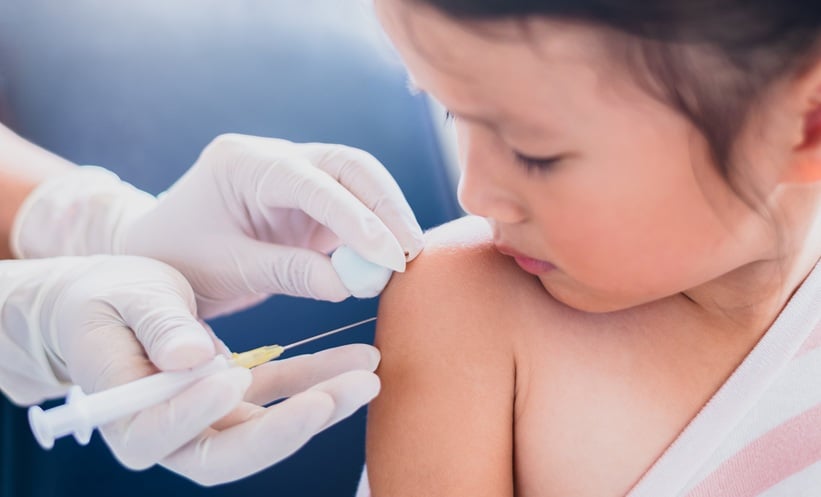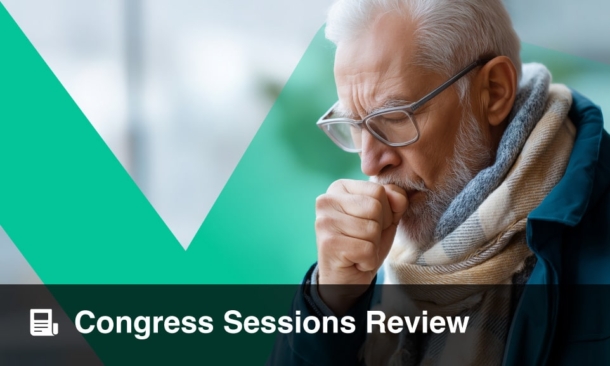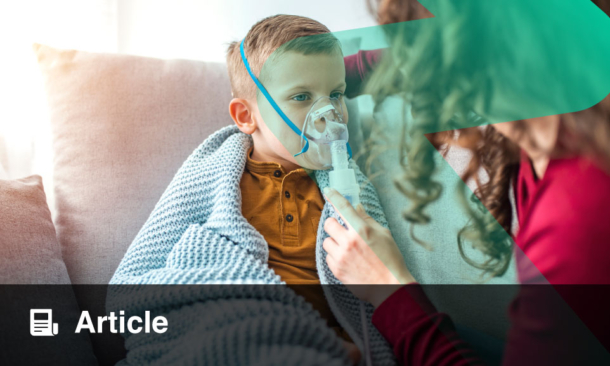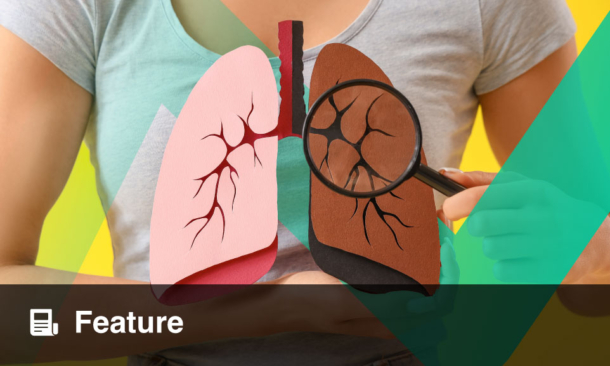Joanna Chorostowska-Wynimko | ERS Vice President and Head of the Department of Genetics and Clinical Immunology at the National Institute of Tuberculosis and Lung Diseases (NITLD), Warsaw, Poland
Citation: EMJ Respir. 2024;12[1]:97-100. https://doi.org/10.33590/emjrespir/VUNC9481.
![]()
Your extensive career in respiratory medicine and genetics has brought you to many prestigious roles, including your current position as Vice President of the ERS. Can you share with us how your journey with the ERS began and what motivated you to take on a leadership role within the organisation?
As always, it’s about dedication and enthusiasm. My journey with the ERS began many years ago. I attended my first congress in 1994, shortly after graduating from university. It was my first major international event, and I was absolutely impressed with the size, the people, and the expertise, and that has inspired me to follow the same pattern. After a few years, I was elected as a national ERS delegate for Poland, and that’s what started my very close interaction with the ERS, which wasn’t always easy but very stimulating for me as a clinician and as a scientist. The ERS provides an opportunity to truly enrich your professional career in a very positive way. It offers an international perspective through meeting people who serve as inspiring examples of where you can aim to go, who to follow, and how to shape your professional goals.
ERS is an environment where you can visualise the direction you want your life to take. This is especially important now, as we discuss work-life balance more than ever. ERS allows you to see people who have reached various stages of professional and personal development, providing a point of comparison and inspiration.
Starting as a national delegate, I took on multiple roles and eventually became ERS Secretary General before becoming a candidate for the presidential election. I hope I proved myself to many, and now I am the ERS Vice President.
What sessions are you most looking forward to about this year’s ERS Congress?
Professionally, I am involved in the diagnostics of respiratory diseases, with a specific focus on molecular techniques and technologies that can be implemented in routine clinical work. This is reflected in my interest in lung cancer, which I believe is a rapidly progressing field in terms of diagnostics, molecular diagnostics, and genetics. These aspects are now a standard part of the routine evaluation of patients and are crucial steps before making decisions regarding optimal therapy.
Nowadays, respiratory specialists play a key role in diagnosing both advanced and early-stage lung cancer, forming a crucial part of the multidisciplinary team, and taking responsibility for the treatment process. We have been involved with lung cancer primary prevention (smoking cessation programmes) for decades, and recently we have been working towards strengthening low-dose CT lung cancer screening projects in Europe.
So, there’s a lot we as medical professionals with interest in respiratory field can do for potential patients and people in general. This is very well reflected in the ERS Congress programme this year. Number of sessions addresses the topics I have just mentioned. Modern therapies require modern diagnostics, as you’ve mentioned. What are the biggest challenges currently facing the implementation of molecular diagnostics in lung cancer?
Many challenges exist, but fundamentally, it’s about organising the process. In recent times, diagnostics and treatments have become complex, involving many experts, starting from respiratory physicians, radiologists, molecular biologists, genetics, clinical oncologists, thoracic surgeons, radiotherapists, psychologists, and physiotherapists. Having all these specialists engaged in the patient journey is very important, and organising the process so that these professionals have the opportunity to communicate with each other is crucial.
Another key aspect is patient involvement. This is incredibly important because some decisions are life-changing for the patient. I firmly believe it’s essential to have patients or a patient representative involved in the decision-making process.
From a technological standpoint, one key tool is next-generation sequencing (NGS), which provides vital data for the optimal management of lung cancer. A lot of clinically important data can be derived from NGS analysis. So, the question now is, how do we use this information for the patient’s benefit?
Your work focuses on extending survival but also improving the quality of life for patients. What are some of the key elements in your practice that contribute to achieving both these goals simultaneously?
I believe it’s how we deliver healthcare. The process is complex and often lengthy, so making it more concise and efficient is vital for patients. The waiting period for a final diagnosis is particularly challenging, making it crucial to shorten this time.
At the same time, I strongly believe that providing psychological care should be a routine part of healthcare, not only at the moment when the diagnosis is presented to the patient but also throughout the waiting period for the diagnosis. This waiting time is often just as difficult for the person as the diagnosis itself, even if they aren’t officially a patient diagnosed with cancer yet. So, I think time efficiency is incredibly important, not just for us as healthcare providers but even more so for the patient.
You’ve discussed the benefits of targeted therapies and immunotherapy on patients’ daily lives. How important do you think patient education and involvement are in the decision-making process for their treatment?
I believe patient education is important nowadays for essentially any respiratory disease. This is true for lung cancer, asthma, and COPD. I am a strong believer in patient education, not only because I feel that patients have the right to understand what’s going on and why a particular treatment has been chosen, but also because they have the right to be part of the decision-making process.
Feeling empowered and having the opportunity to speak their mind transforms the patients from subjects of treatment to active participants.
I always do my best with my patients to explain where their symptoms come from and what we can do to alleviate them. For instance, explaining when and how to use an inhaler in specific situations. This approach is greatly appreciated by patients because it gives them a sense of partnership, and it’s appreciated by me because I feel like I have a partner in their care.
Do you hope to emphasise this level of patient education and involvement in your role as Vice President of ERS?
I have been working with the ERS for many years, and I do believe that ERS is the organisation that provides high-quality information. While education for healthcare professionals is a cornerstone of our organisation, providing high-quality patient education is an equally important goal, and that’s where the ERS excels. And we work hand in hand with the European Lung Foundation (ELF), the key patient-led European organisation in our field.
Additionally, and ERS are a part of the International Respiratory Coalition, and one of the key goals of both the international and national coalitions is to support and build educational activities directed towards patients as well as the general public. I think it’s important to inform the general public because the information is also a form of prevention. This approach has been a part of ERS policy for many years, so it’s not new, it’s about continuity and being consistently there for patients.
Artificial intelligence is a major theme of this year’s congress, and it’s increasingly being integrated into healthcare. How do you see AI transforming the field of respiratory medicine, particularly in areas like lung cancer diagnosis?
AI has already been transforming the field of lung cancer screening. For example, I don’t believe an efficient national lung cancer screening programme would be possible without AI involvement. There are AI tools that have been validated for clinical use, which support radiologists within national screening programmes in Europe. AI helps to make the process faster and more efficient, enhancing our day-to-day work in medicine.
AI is not only used in prevention but also in diagnostics and treatment. For example, in genetics and NGS, where broad molecular panels involve hundreds of genes, AI is crucial for analysing the vast amount of information generated. It helps us link genetic data to clinical information to better understand the clinical significance of specific gene alterations. Without AI, we would struggle to fully comprehend the complexity and potential clinical value of these findings.
As someone deeply involved in both clinical and scientific leadership, what do you think are the most pressing challenges for the respiratory community today, and how do you think the ERS can help to address those?
There are many pressing challenges, but in lung cancer specifically, the rising prevalence, particularly among women, is a key concern. This situation is almost like an epidemic, and we must make every effort to prevent it. A key factor is smoking, as unfortunately, about 30% of the European population are still smokers. Additionally, new forms of nicotine use, like vaping, are also a concern. Vaping is definitely not safe, and ERS has been emphasising this for years. Recently, we issued a new statement on this issue. It’s crucial that this message reaches the general public, especially the younger generation, who are starting to smoke again.
Policymakers and politicians also play a critical role since they make decisions about budgets and regulations. Addressing these challenges requires action at multiple levels. In the context of lung cancer, it’s a disease that carries a heavy burden, both psychologically and economically. Therefore, our approach must include primary prevention, such as smoking cessation, secondary prevention, like lung cancer screening, and if cancer is suspected, ensuring the best possible care for the patient. This includes providing access to advanced molecular diagnostics at a professional and comprehensive level, not just in Europe but globally.
Finally, what are you most looking forward to in your new role as President-Elect of the ERS?
This is a challenging question because there are so many activities that I’m excited about. As the President-Elect, I represent over 34,000 members of the ERS. It’s a significant responsibility that I truly feel, but it’s also a great honour. Being elected by your peers for such a role makes you proud.
I see my role in several ways: firstly, representation, and secondly, bringing the voice of respiratory experts to others, to the public, policymakers, and other medical specialties, such as cardiologists, radiologists, clinical oncologists, and many others. Collaboration with medical professionals is especially important because we share common interests, particularly in patient care.
I also believe strongly in primary and secondary prevention. Prevention is one of the most effective ways to improve health outcomes; it’s better to prevent diseases than to treat them. This is something I want to particularly emphasise during my presidency.
Coming from Poland, which is in Central and Eastern Europe, I am aware of the specific issues within this region. I hope to further engage my colleagues from this area within the ERS. They are already very active, but I see many opportunities, especially for young members, to be even more involved. ERS is a wonderful organisation that embraces not only clinicians but essentially anyone interested in respiratory medicine, at any stage of their professional career.
I’m particularly proud of our Early Career Members Assembly. It’s not just an opportunity for networking and shaping professional paths; it’s also about having fun and making the journey enjoyable. I believe that enjoying your career is an important part of professional life, and that’s something I hope to foster.








